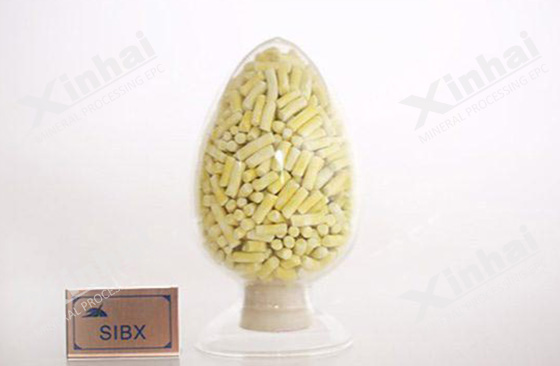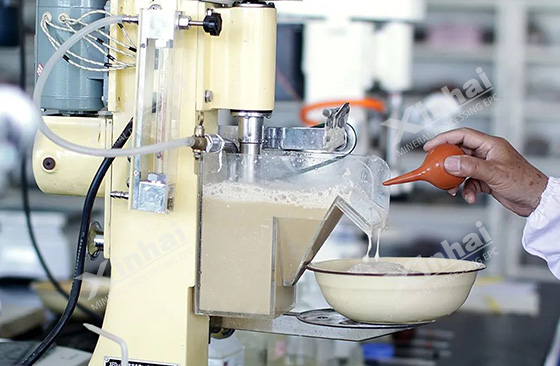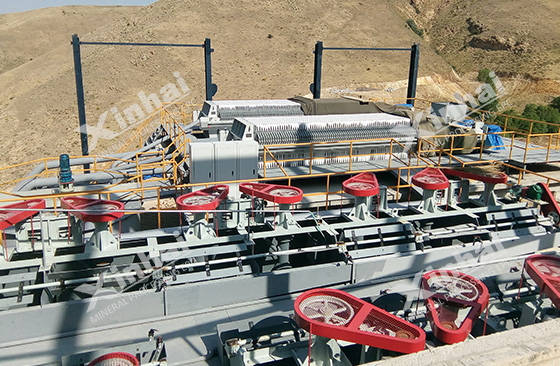
Fluorite mineral is an important non-metallic mineral resource, and it is the main source of fluorine element in the industry. Fluorite ore has been widely used in metallurgy, aluminum smelting, ceramics, cement and other fields. But fluorite is often associated with quartz, calcite, barite and other minerals, affecting its taste. To recover the fluorite, the flotation method is often used. The use of collector and inhibitor is the key to fluorite mineral flotation, and the optimization of the process flow and the application of efficient flotation equipment also have an important influence on the flotation effect. The following will introduce the types of collectors and inhibitors used in fluorite mineral flotation.

(Flotation agent)
Common types of fluorite ore collector include: fatty acids, modified fatty acids, and combination traps.
Oleic acid is a commonly used collector in fluorite flotation, which has the advantages of wide source and low price, but it also has limitations, such as poor selectivity, poor water solubility, poor resistance to low temperature and hard water. Therefore, when the application of oleic acid to catch fluorite, it is necessary to heat the ore slurry.
Sodium oleate is generated by the saponification reaction of oleic acid with sodium hydroxide. When dissolved in hot water, it can be completely dissociated into ions and has a certain low temperature resistance. Sodium oleate is mainly used in the flotation process of calcite, quartz-barite and golden fluorite type.
Ooleic acid+oxidized paraffin soap is a combined collecting agent that can be used in quartz fluorite ore, which can effectively reduce the content of silica in fluorite concentrate, and its selective index is better than that of these two agents alone.

(Flotation process test)
Common fluorite mineral inhibitors are mainly divided into inorganic inhibitors, organic inhibitors, combined inhibitors and new inhibitors.
Water glass and modified products: these agents have a good effect on gangue minerals such as silicate and carbonate. When using inhibitor modified water glass to process carbonate type high mud fluorite mine, good flotation index and recovery rate can be obtained.
Sodium hexametaphosphate: the inhibitor sodium hexetaphosphate can be used to treat calcite and other calcium gangue minerals. After adding six pieces of sodium phosphate to the pulp, the calcium ions on the surface of calcite transfer from the solid phase to the liquid phase to reducing the active point of the calcite surface trap adsorption, and achieving the purpose of inhibiting calcite flotation.
Metal salts: they have a good inhibitory effect on barite flotation. When cycloalkanic acid is used as a collector and aluminum sulfate is used as an inhibitor to separate barite-fluorite minerals, the aluminum ions in metal salts can be strongly adsorbed on the surface of barite, to achieve the effect of inhibiting the emergence of barite.

Stylose polysaccharides: it is mainly used to inhibit barite. When the pH value of the pulp is lower than 8.5, starch has a strong inhibitory effect on barite and no effect on fluorite flotation, thus realizing the separation of the two ores.
Castanextract: mainly used to inhibit calcite. When treating fluorite minerals, 731 is used as the fluorite ore collector, and tannin extract is used as the calcite inhibitor, which can effectively recover the fluorite ore in the ore.
Gallic acid: when the pH value of the pulp is within the range of 9-11, gallic acid can strongly inhibit the collection of calcite by sodium oleate. Gallic acid can react with calcium ions on the mineral surface of calcite to form chelate. The adsorption of such chelates is stronger than that of sodium oleate to calcite. At the same time, a hydrophilic film is formed on the surface of calcite to inhibit the emergence of calcite.
Tannic acid+water glass: This combination of inhibitors is mainly used to inhibit calcite and quartz. When dealing with quartz-calcite type fluorite ore, tannic acid and water glass can be used to suppress gangue minerals and comprehensively recover fluorite ore.
Water glass+caustic starch+sodium hexametaphosphate: This combination inhibitor is mainly used to inhibit gangue minerals such as quartz, calcite, kaolin and hematite. When dealing with quartz-type fluorite ore, this combination of inhibitors can be used in the roughing stage, and citric acid + water glass can be used as inhibitors in the beneficiation stage, so as to improve the grade of fluorite ore concentrate.
Water glass+aluminum sulfate+tannin extract: This combination of inhibitors has a good inhibitory effect on non-metallic minerals such as quartz, barite, calcite and kaolin. If the fluorite ore in the lead-zinc tailings is recovered, such combination inhibitors are used to suppress barite and other gangue minerals, and sodium oleate is used as the fluorite collector, which can improve the recovery rate of fluorite ore.

(Fluorite mineral flotation equipment)
The above are commonly used collectors and inhibitors in fluorite mineral flotation. The specific agents should be selected according to the characteristics and properties of the ore. Xinhai Mining suggests carry out beneficiation test to determine the properties of the ore, so as to determine the pharmaceutical system and flotation process. Establishing the correct fluorite flotation process and pharmaceutical system can further comprehensively recover the fluorite mineral resources, improve the concentrate grade and the economic benefits of mineral processing.
To find out more about our products and solutions, please fill out the form below and one of our experts will get back to you shortly.